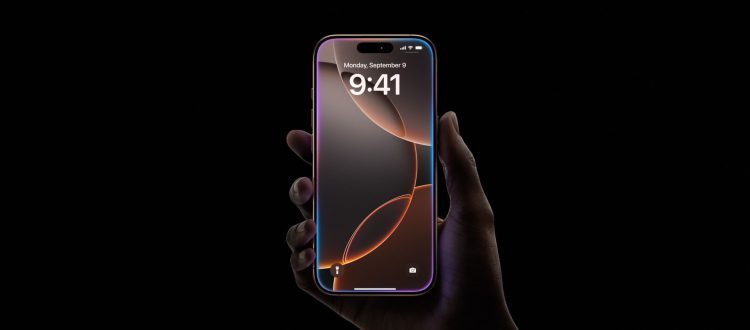We review everything announced at the Apple iPhone 16 event (Glowtime). The company that fell on Newton’s head did it again; it introduced many different products and features to answer the rumors that Apple is lagging in the AI race and Android has left iOS behind.
Everything announced at the Apple iPhone 16 event
What makes the new iPhone 16 series special for the company, what’s new in the Apple Watch Series 10, and how do the latest AirPods offer innovations for audio wearables? Of course, the most curious is the iPhone 16 itself.
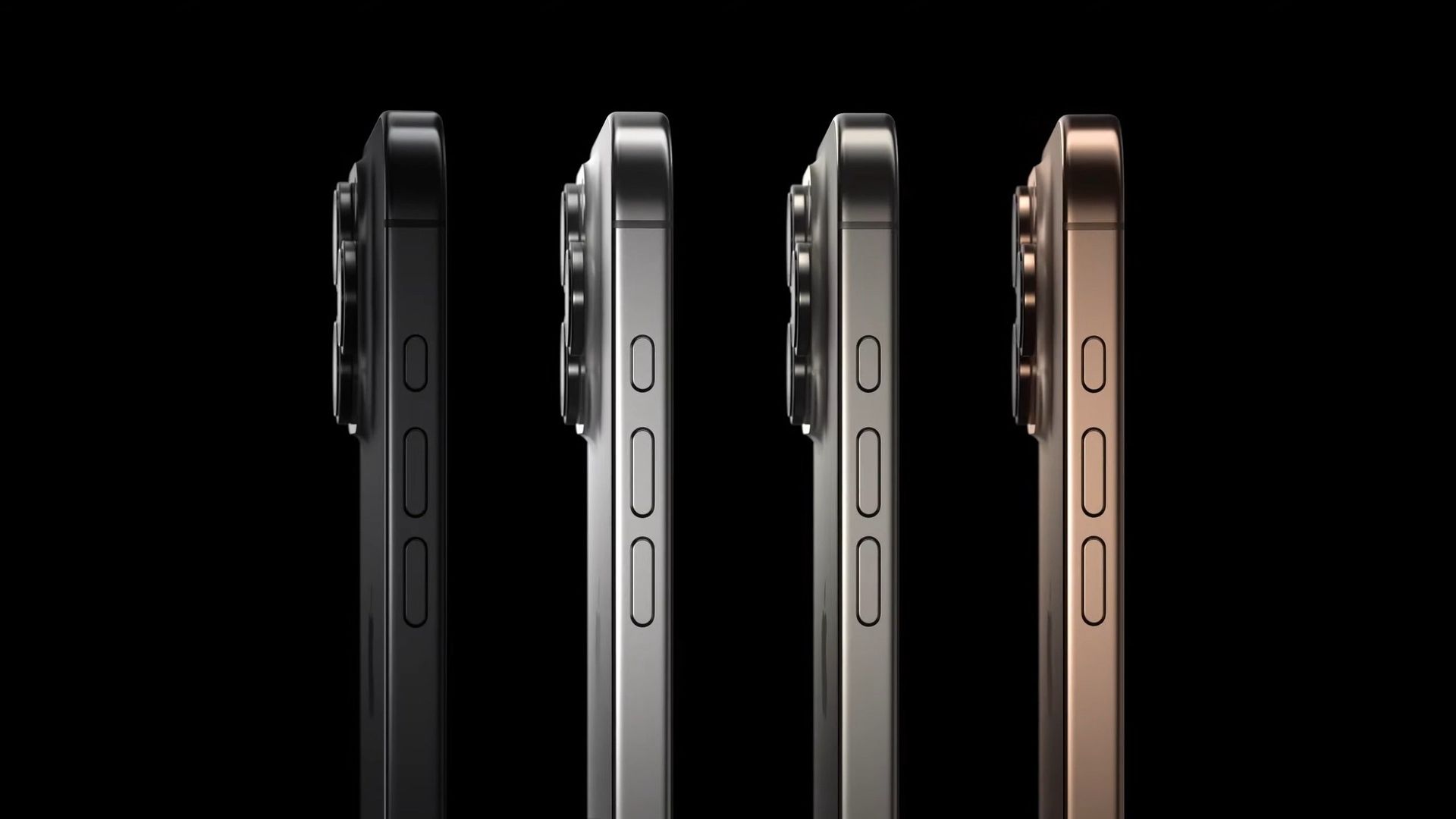
iPhone 16 and iPhone 16 Pro: What’s new?
In the iPhone 16 series, where Apple introduces its latest flagship models with major upgrades compared to its predecessors, we say goodbye to some of the buttons we are familiar with Apple and hello to others. iPhone 16 and iPhone 16 Pro offer not only a new look but also Apple Intelligence.
New design and color options
Apple continued Steve Jobs’ design tradition and introduced 3 new color options for iPhone 16 series:
- Ultramarine
- Teal
- Pink
Color-infused glass backs give these phones a vibrant, modern aesthetic, while the classic White and Black options remain for those who prefer a more traditional look.
A notable addition is the new Action Button, a programmable feature introduced on the previous iPhone 15 Pro. This button adds versatility, allowing users to quickly perform tasks such as launching apps or taking photos. Speaking of photos, the iPhone 16 offers a dedicated camera button similar to those found on DSLR cameras. This haptic sensor not only takes photos but can also adjust camera settings based on the pressure and movement of your touch.
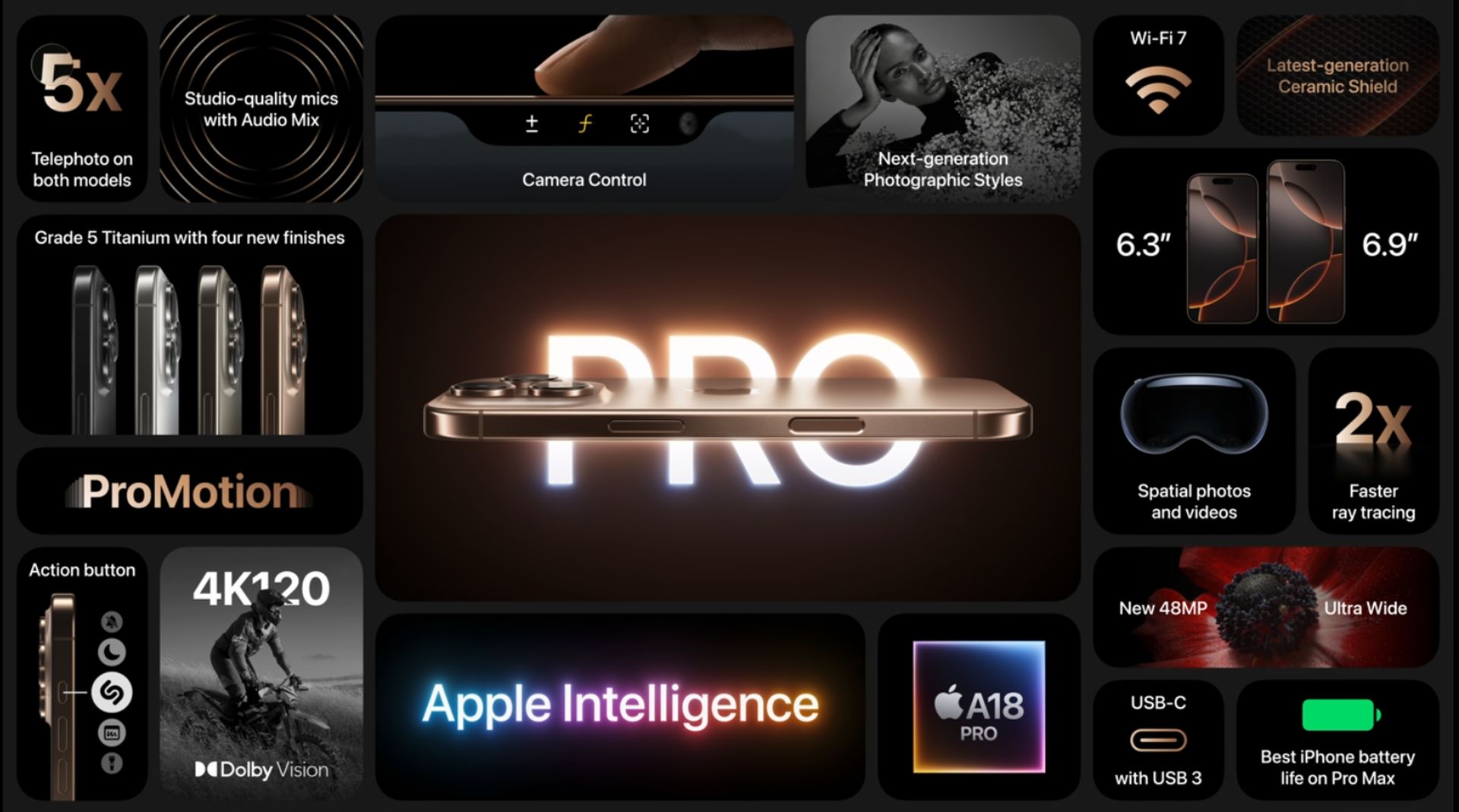
A18 chip is the power behind the performance
At the heart of the iPhone 16’s capabilities is Apple’s new processor, the A18 chip. Equipped with a 16-core Neural Engine, it is designed to handle the increasingly complex tasks of modern smartphones, especially those related to artificial intelligence and machine learning. Apple Intelligence will work with this chip. Some innovations:
- Apple says the A18 has a new memory system to handle data quickly.
- The A18 chip is 30% faster than the iPhone 15’s A16 Bionic chip.
- Apple said the A18 chip is more efficient thanks to second-generation 3-nanometer manufacturing.
The A18 chip will offer faster performance and the same battery capacity, but with longer battery life by using power more efficiently. But these are already expected things, we will see how much this works after the phone reaches the users.
Camera enhancements
Like every year, the iPhone 16’s camera system has also received upgrades. The main sensor now has 48 megapixels, enabling ultra-sharp photos even in low light. The Ultrawide lens captures up to 2.6 times more light and is designed for landscape photography or moments when a wider field of view is needed. In addition, the newly added Capture button will be mechanical and respond to pressure and touch.
- Press the button lightly to autofocus when taking a photo or video.
- Press the button harder to take a photo.
- Slide the button left and right to zoom in and out.
- Swipe forward or backward to switch between photo mode and video mode.
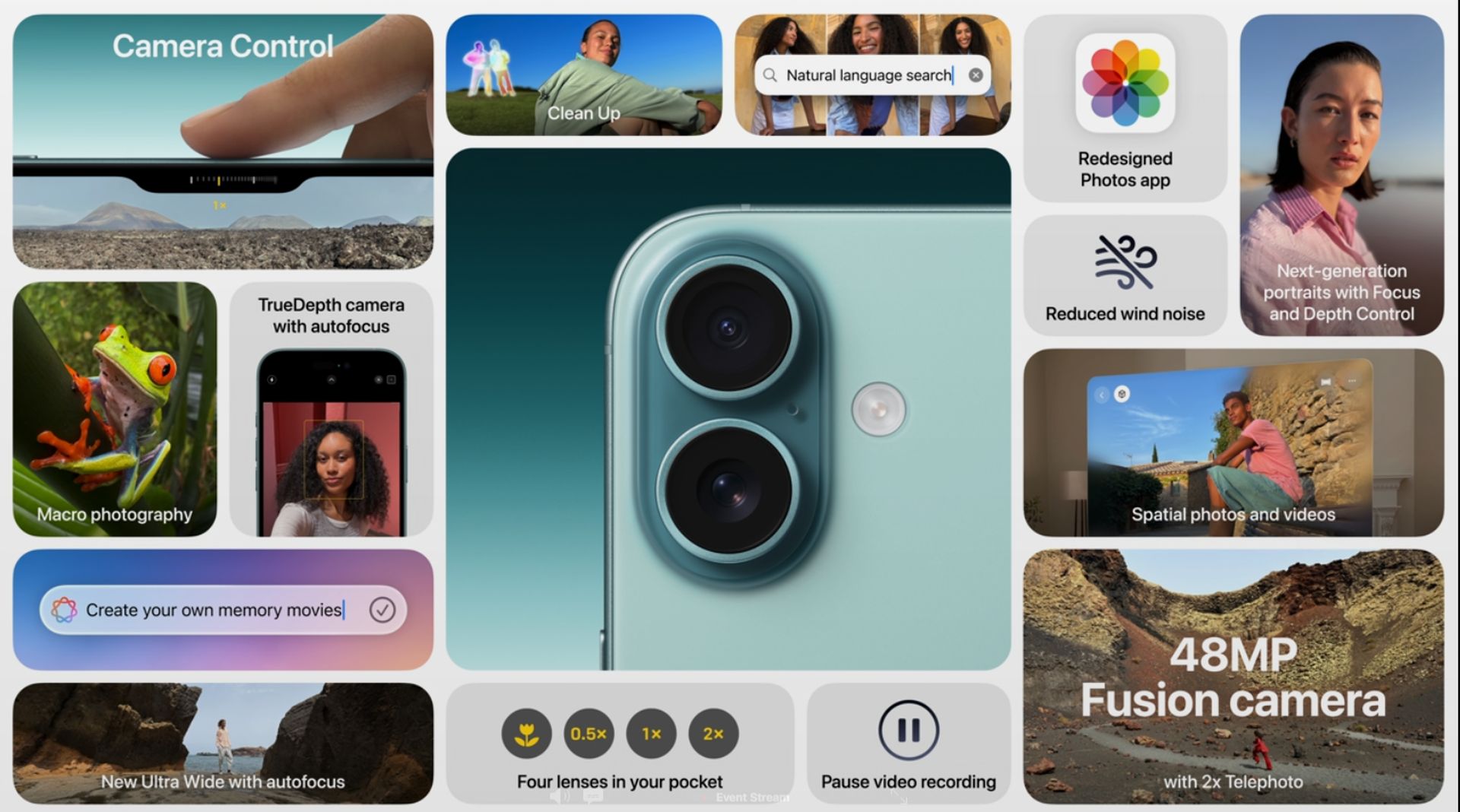
The Capture Button will be available on all four iPhone 16 models. Apple’s focus on AI is also reflected in the camera’s functionality. Combined with the powerful A18 chip, the new camera button enables advanced features such as real-time photo adjustments and advanced image processing. This feature has been used a lot on Android phones in recent years, and the iPhone has a similar feature, but this level of control is a new addition.
- iPhone 16 Pro and iPhone 16 Pro Max camera:
- Back / main (wide-angle): 48 MP, Sony IMX903 sensor, 1/1.14″ sensor size, f/1.78 aperture, 24mm lens equivalent, optical image stabilization (OIS).
- Ultrawide: 48 MP, 1/2.6″ sensor size, 0.7um pixel size, f/2.2 aperture, 13mm lens equivalent.
- Telephoto: 12MP, Telephoto camera—5X optical zoom, 12 MP, 1/3.06″ sensor size, 1.12um pixel size, f/2.2 aperture, 120mm lens equivalent, OIS.
- Front: 12 MP, 1/3.6″ sensor size, f/1.9 aperture, 23mm lens equivalent, OIS.
- iPhone 16 and iPhone 16 Plus camera:
- Back / main (wide-angle): 48 MP
- Ultrawide: 12 MP
- Front: 12 MP
The only difference between the iPhone 16 and 16 Plus and the 16 Pro and 16 Pro Max is the Telephoto feature. In addition, all sensors and features are the same.
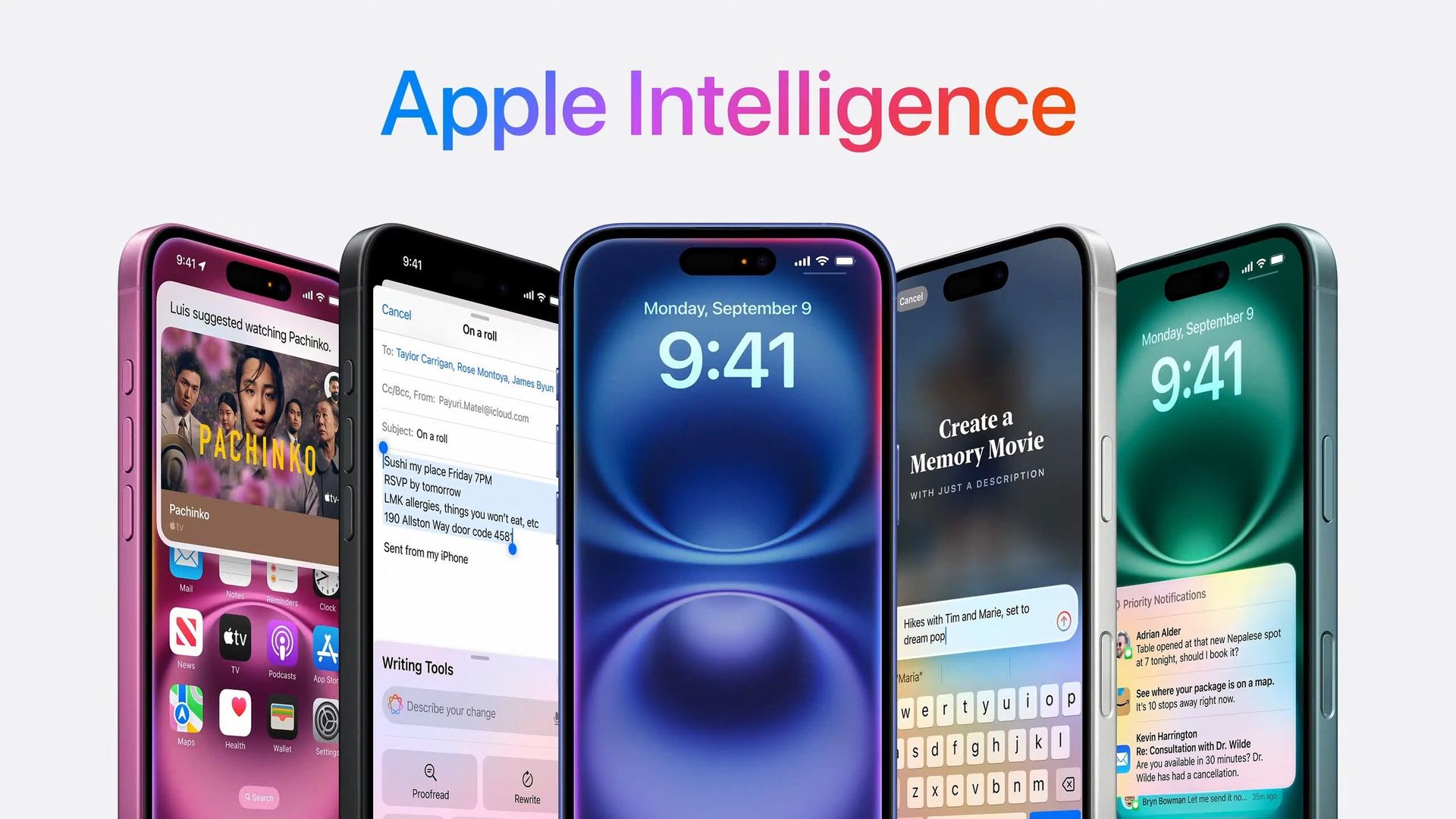
The Apple Intelligence of the end is rolling out
It’s been almost two years since competitors added AI, while Apple has been content with improving the hardware. That’s finally changed, with Apple Intelligence announced alongside the iPhone 16. One of the highlights is that it will keep complex AI tasks on-device and your data will not be shared with Apple or any other company.
The AI integration adds many new features such as photo search, a chatbot, integration with Siri, and the ability to create custom emojis. If you are someone who uses ChatGPT and Midjourney a lot, the new iPhone aims to offer them in its brand name.
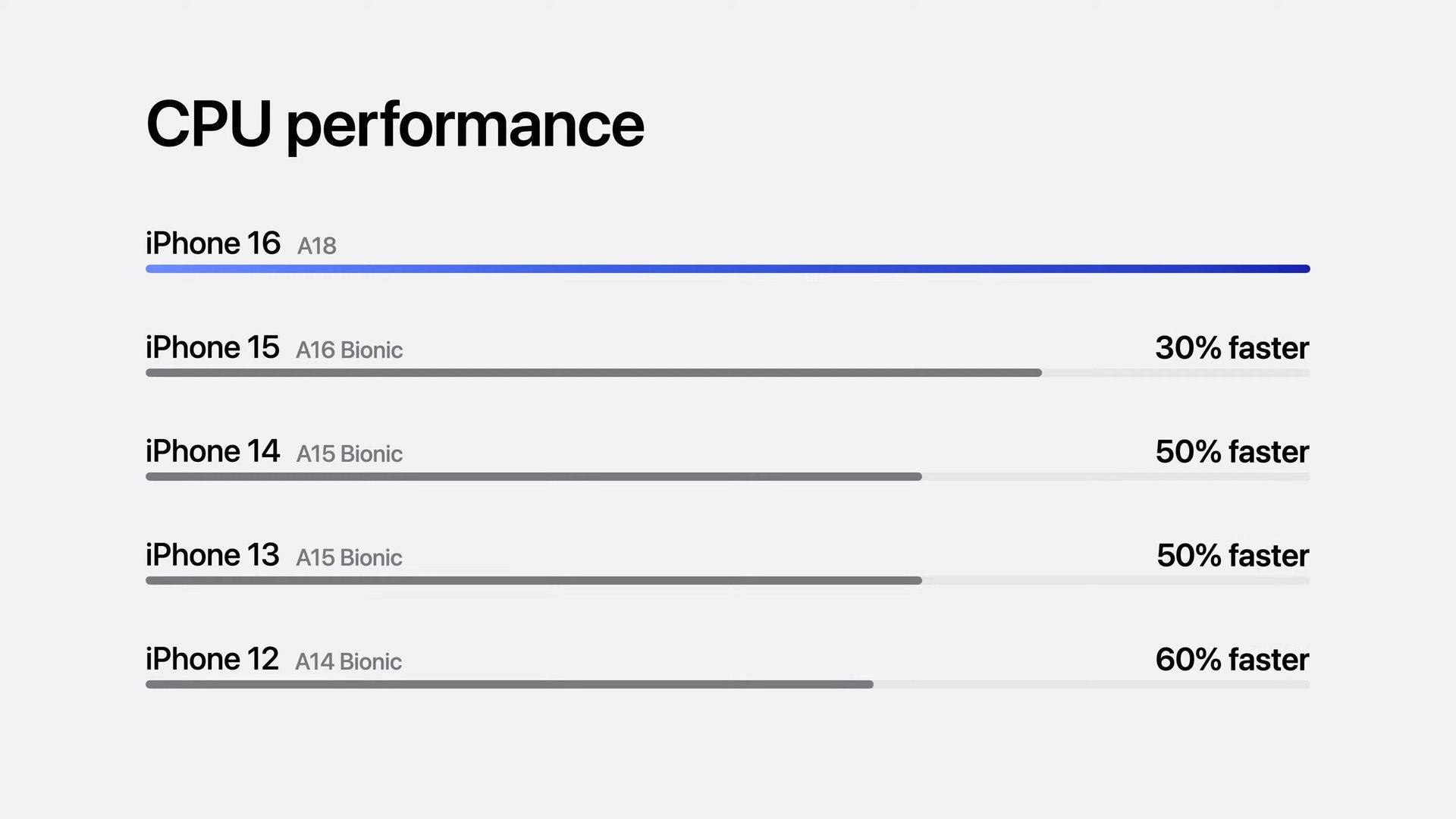
Gaming and battery life
For gamers, the iPhone 16 offers improvements like a more robust cooling system and a 30% increase in GPU performance. Apple has already enabled us to play games like Resident Evil Village or 4 on our phones, which require high system requirements even on PCs. However, the lack of a processor and GPU was evident. It didn’t catch on in games, but this opened a door. You can now play new PC or Console games on your phone. It looks like the company will keep going on this. Paired with a bigger battery and better power management in iOS 18, users can expect longer gaming sessions without constantly reaching for the charger. Price table for you:
| Model | 128GB | 256GB | 512GB | 1TB |
|---|---|---|---|---|
| iPhone 16 | $799 | $899 | $1,099 | – |
| iPhone 16 Plus | $899 | $999 | $1,199 | – |
| iPhone 16 Pro | $999 | $1,099 | $1,299 | $1,499 |
| iPhone 16 Pro Max | – | $1,199 | $1,399 | $1,599 |
Apple Watch Series 10: Bigger, brighter, and smarter
While the iPhone 16 was the star of the show, the Apple Watch Series 10 also made an appearance. The familiar design has been retained and slightly improved. The company wants the new watch to be easier to control. As for the price:
- The Aluminum series starts at a price tag of $399 and goes up.
- The Titanium series starts at $699 and goes higher.
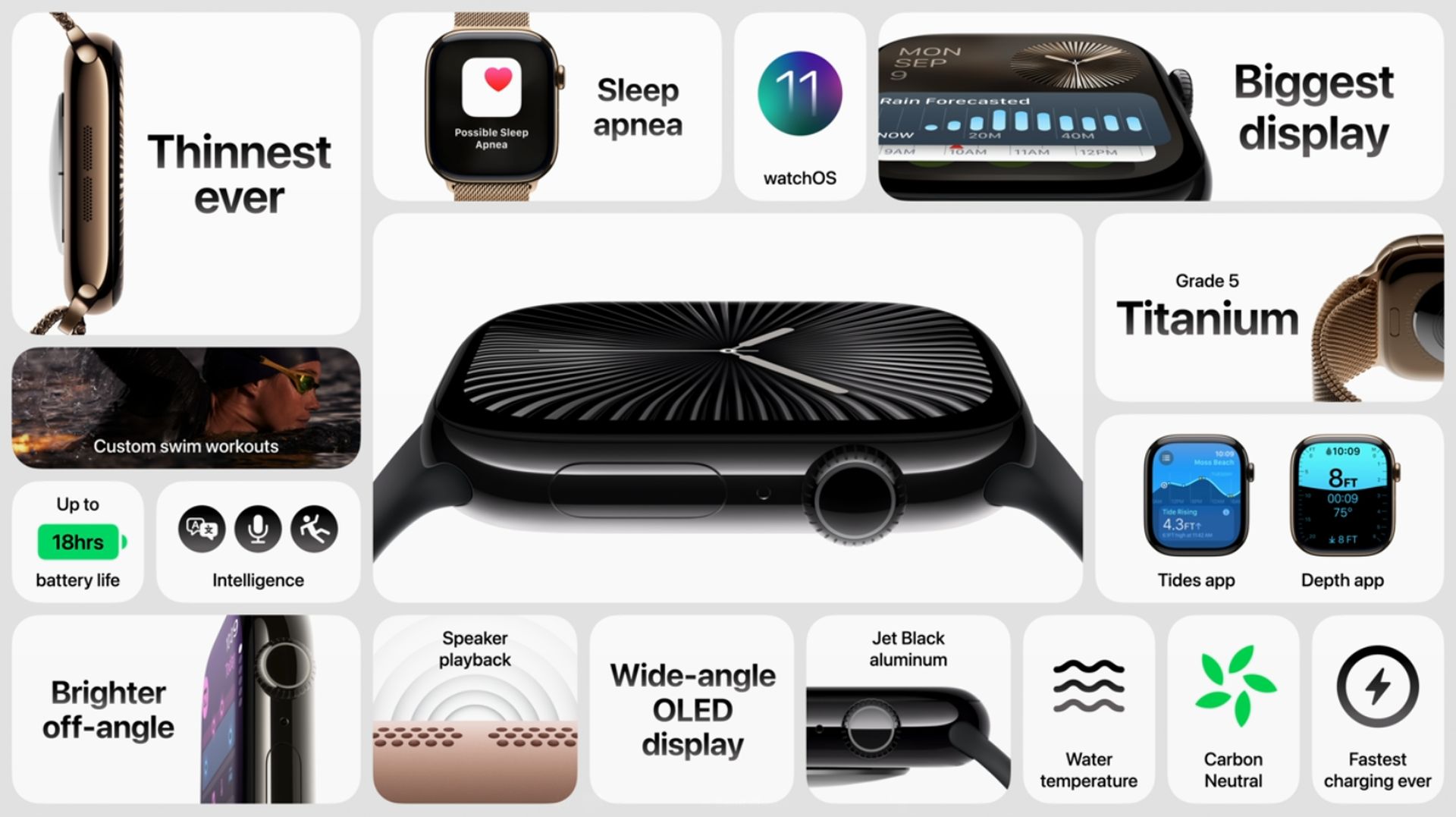
Redesigned for a new generation
The Apple Watch Series 10 may look familiar at first glance, but Apple has made some thoughtful changes that improve its usability. The most notable improvement is the 30% larger display compared to the Series 6. This increase in screen real estate makes it easier to read notifications, messages, and other content at a glance.
Not only is the screen bigger, but there’s also a 30% increase in brightness compared to previous models. If you find it hard to see your watch on sunny days, that’s why.
Innovations in health
Health tracking has always been an important feature of the Apple Watch, and Series 10 wants to take it to the next level. One of the new features is the ability to detect Sleep Apnea, a common but serious sleep disorder, without the need for a sleep study. The watch monitors your sleep patterns and alerts you when it detects irregularities, allowing you to seek medical attention before the situation worsens. In addition to sleep tracking, the Series 10 includes new exercise features such as a depth app for divers and a tide app for surfers.
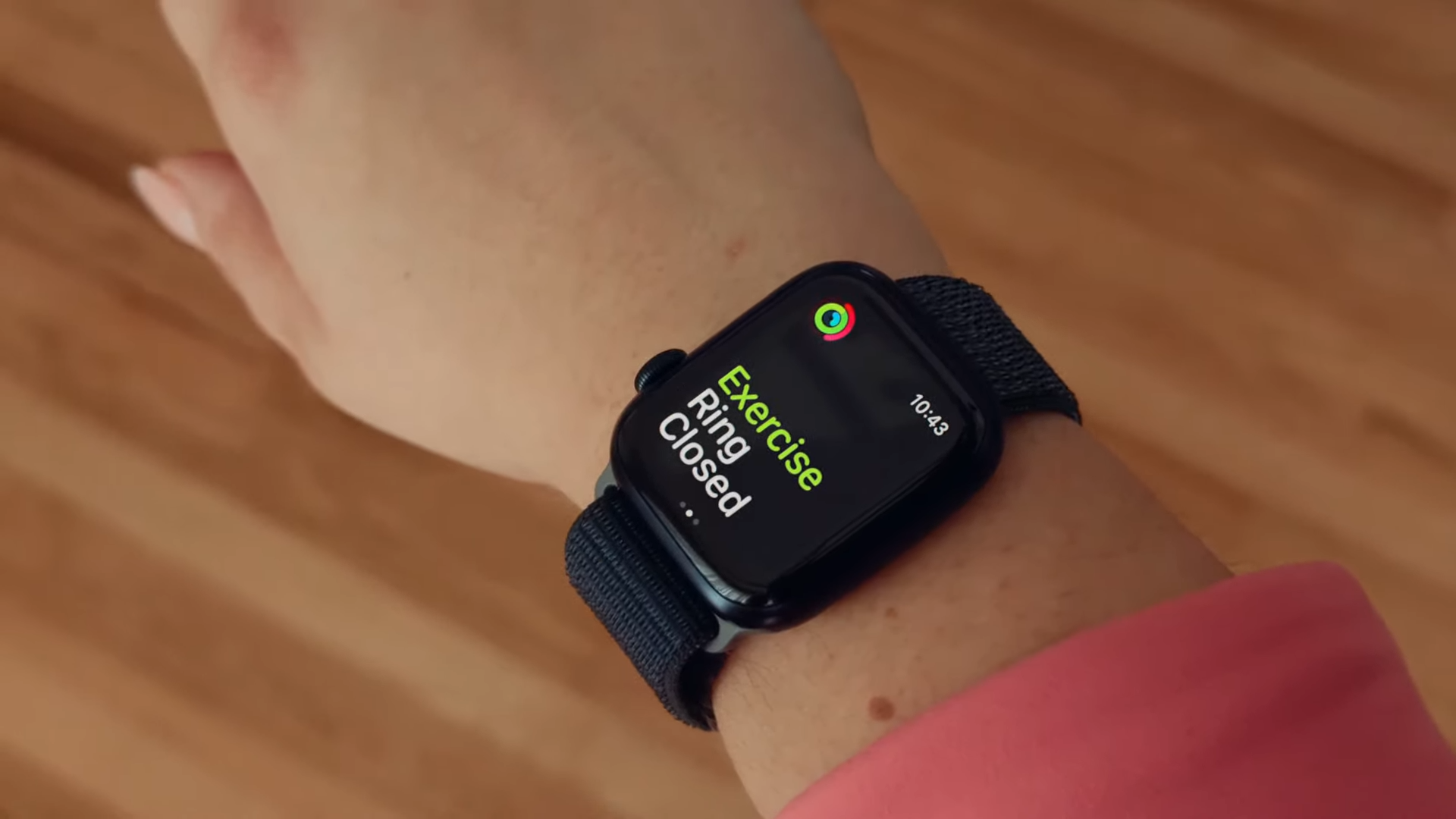
New skins and faster charging
Apple has also introduced new finishes for the Series 10, including a premium Titanium option that is 20% lighter than the Aluminum version. So you can expect a more flexible and spacious build, an update to prevent sweating during long wear. Apple Watch Series 10 is faster to charge thanks to improvements to the charging coil.
For those looking for something even more exclusive, the Apple Watch Ultra 2 is now available in a Satin Black finish with a matching titanium band. This model offers all the features of Series 10 with a few extra perks for the most discerning users.
One step forward every year with AirPods 4
With the introduction of AirPods 4, Apple has taken the opportunity to refresh its popular AirPods lineup. These new earbuds come with improvements in sound quality. Prices vary for the two different types:
- AirPods 4, $129.00.
- AirPods 4 with Active Noise Cancellation, $179.00.

A more comfortable fit
The biggest problem with in-ear headphones is that they don’t fit comfortably after you put them on. AirPods 4 have been redesigned for a more comfortable fit, addressing the most common complaint about previous models. The new design is said to be more ergonomic and designed to support your ear. Still, it’s worth a try. The new device has improved sound isolation so the listening experience may be healthier. The H2 chip in AirPods 4 improves sound quality with Personalized Spatial Audio.

Noise cancellation for all
One of the big notable upgrades in AirPods 4 is the inclusion of noise cancellation, a feature previously exclusive to AirPods Pro. This was expected because, again, competitors have managed to steal customers, even from iPhone users, by releasing this feature on earlier non-Pro versions of the earbuds. Competition has been a good thing for the user. But the company has done a little trick again. There are two different versions of AirPods 4. One includes Noise cancellation and is more expensive, the other does not and is cheaper.
Apple has also added a speaker to the charging case, making it easier to locate your AirPods in case you lose them. The case itself has been redesigned with a smaller form factor and now charges via USB-C, signaling the slow end of Apple’s proprietary Lightning cable for this product line.
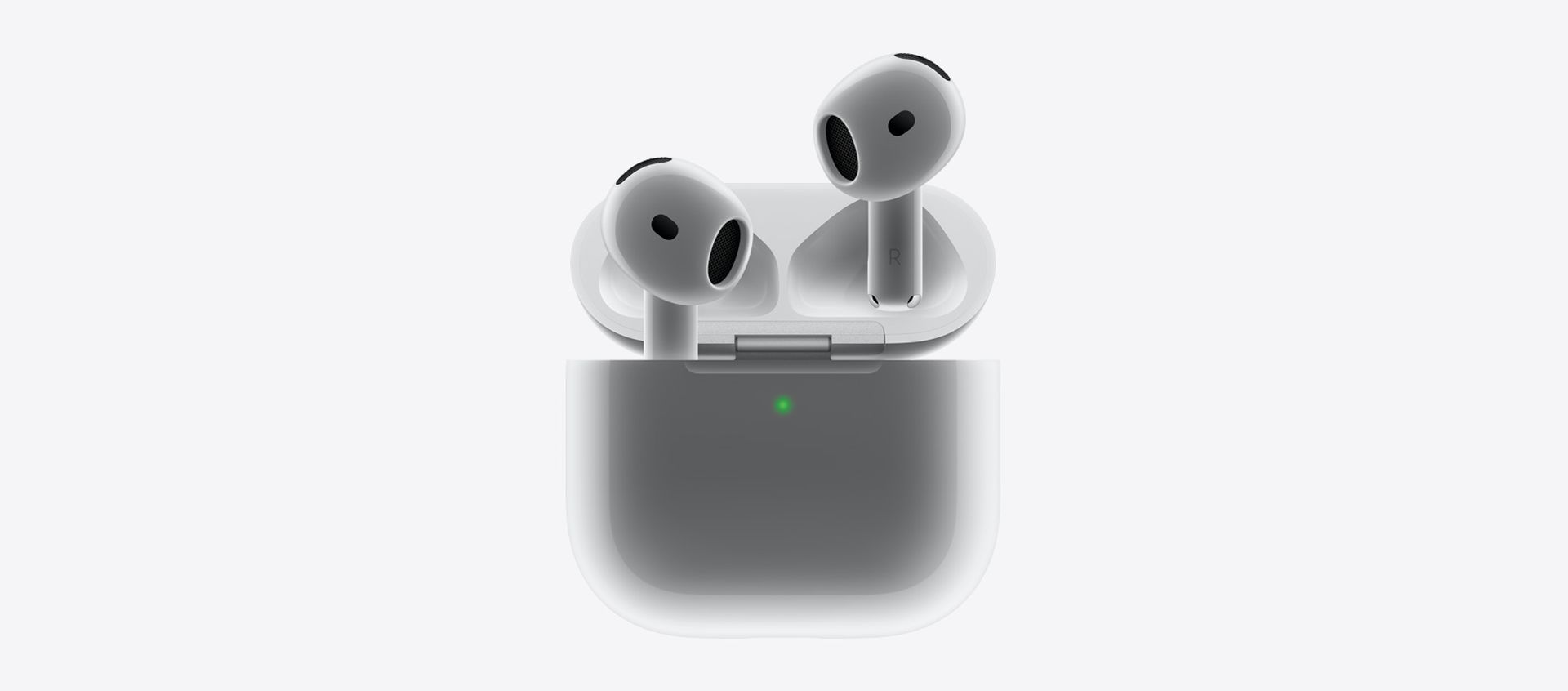
Pro-level features
The AirPods Pro 2 got some updates too. They now have hearing protection features that use machine learning to detect loud noises and adjust the noise cancellation to protect your hearing. The AirPods Pro 2 can also function as hearing aids, offering a discreet solution for those with hearing impairments. Apple updated the AirPods Max with new colors and USB-C charging. The price is still $549, but the updates make them more attractive for audiophiles.
Featured image credit: Apple

